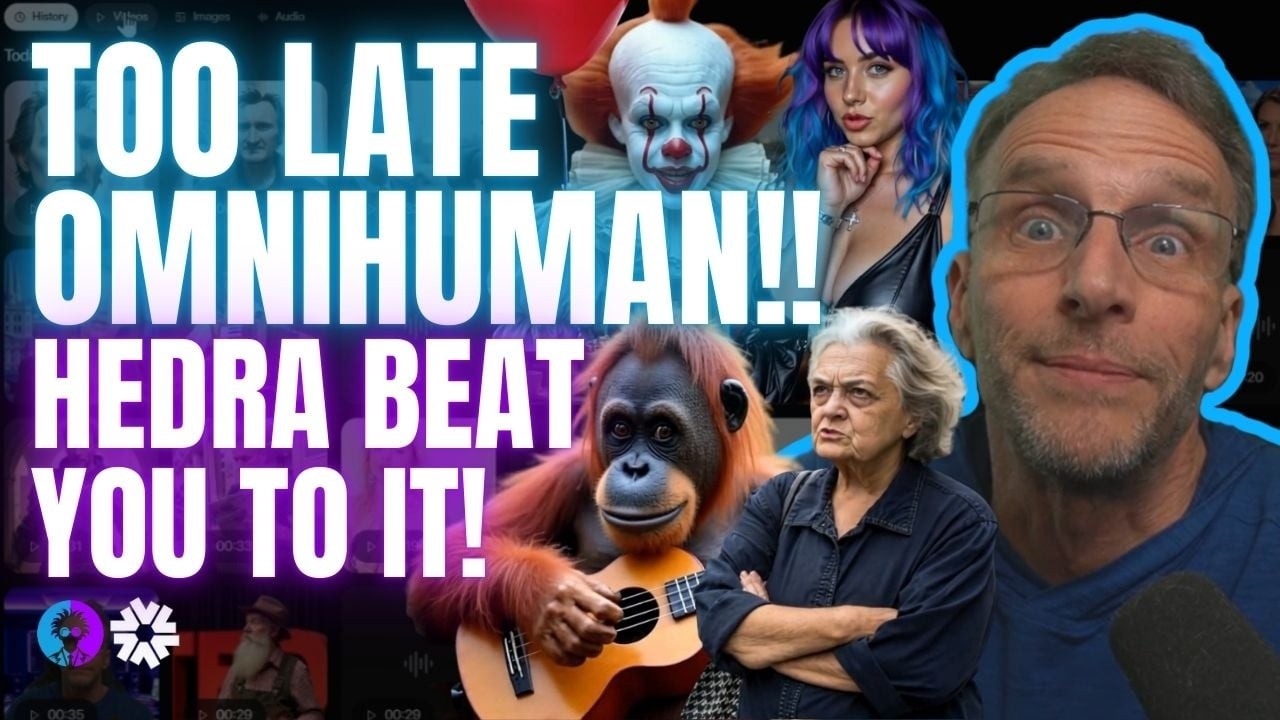The video introduces Hedra’s new facial animation software, Character 3, which features enhanced facial and full-body animations, as well as the ability to generate content from audio files, surpassing competitors like Omnihuman. The presenter showcases the platform’s user-friendly interface and shares tips for optimal use, highlighting its creative potential for animators and storytellers.
In the video, the presenter enthusiastically introduces the latest release from Hedra, a facial animation software platform called Character 3. The excitement stems from the platform’s significant advancements, which include not only enhanced facial animations but also full-body expressions and dynamic environments. The presenter believes that this new version surpasses competitors like Omnihuman, offering a comprehensive suite of tools for creators to tell their stories using various media formats. The video showcases the new features and capabilities of Hedra Studio and Character 3, emphasizing its all-in-one creation platform.
The presenter highlights the user interface of Hedra Studio, noting that it has undergone a transformation. Users can now access a variety of animation options beyond just facial movements, including background animations and gestures. The software allows users to generate images and animations from audio files, making it easier to create engaging content. The presenter reassures existing users that their previous work can still be accessed through a legacy feature, ensuring a smooth transition to the new platform.
Demonstrating the software, the presenter creates an image using the Flux Dev model, which generates realistic characters. They explain the process of uploading an audio file or using text-to-speech to animate the character’s face. The presenter shares tips on navigating the platform, including the importance of waiting for the rendering process to complete before leaving the page. This attention to detail is crucial for users to avoid losing their work during the generation process.
Throughout the video, the presenter shares their experiences and experiments with the software, showcasing various outputs and discussing the strengths and weaknesses of the animations. They note improvements in facial animation quality, such as reduced tearing and more natural head movements. However, they also mention challenges with certain images, particularly those with complex facial features or angles that the software struggles to recognize. The presenter emphasizes the importance of using clear images for optimal results.
In conclusion, the presenter expresses their amazement at the capabilities of Hedra’s Character 3, encouraging viewers to explore the platform for themselves. They highlight the flexibility and creative potential it offers, particularly for those interested in animation and storytelling. The video serves as both a tutorial and a review, inviting viewers to subscribe for more content related to AI and animation technology. The presenter’s enthusiasm and detailed insights make a compelling case for the software’s innovative features and its potential impact on the creative community.
